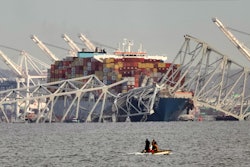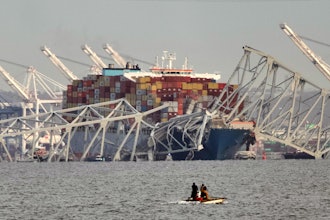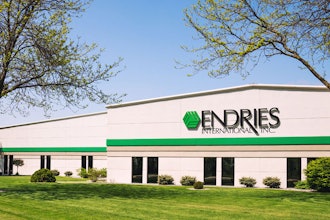
We now face a timeless problem that comes with economic growth and sudden increased demand: the rising costs and limited availability of raw materials.
Coupled with issues such as rising commodity prices, wide-scale shortages of components, and supply chain disruption, almost every industry has been impacted in some capacity. Solving for these issues is merely a “money fix” for many companies, but others are dealing with a cash-squeeze.
Executives must decide the best course of action to offset price increases in the short-term to protect margins, deliver product for their customers and position their business for long-term success. Specifically, we see many manufacturing and industrial companies exploring options such as temporary facility shutdowns or passing the costs on to customers - neither of which bode well for their competitive position or employee retention.
There are many paths to weather this storm. Below, we explore the current state of raw materials, what risks price volatility pose to a business and some best practices to mitigate those.
The Current State of Raw Materials
The economy opened much faster than many expected. This accelerated timeline, a barrage of supply chain disruptions and ongoing labor shortages hit the manufacturing sector especially hard. From steel and copper to plastics and lumber, purchase prices are increasing as the U.S. economy resurges.
It is anyone’s guess on how long inflation will remain an issue and a topic of discussion across boardrooms. There is some optimism as supply chain leaders work to resolve the recent bottlenecks and side effects of weather-related anomalies.
Many businesses face a cash crunch. Soon, we will likely see lower profits trend in the sector despite actions executives take to stabilize operations while balancing increased competition for labor. Although many businesses regularly explore cost-cutting programs, inflation and external disruptions are now a step ahead of the gains made.
That is why managing liquidity – cash on hand and line of credit availability – is paramount in today's environment. Even a cash-rich business needs to protect themselves from a pure efficiency standpoint. There will be opportunities to grow business by taking advantage of a spike or long-term shift in demand for the end product. You need the ability to invest incrementally in capital equipment to meet that demand.
When looking to prepare for the next anomalous event, and to mitigate risks from the current climate, there are a few key things to keep in mind about the numerous benefits in diversification efforts. Focusing on diversification of the supply chain, facility location and distribution channels protect existing operations and provide capacity to meet increased product demand.
Managing liquidity and ensuring that your business is appropriately capitalized is vital to surviving disruption. A fundamental approach would be to match capital sources with capital needs. While somewhat obvious, short-term working capital needs should be financed with short term debt, such as a revolving line of credit. Similarly, long term assets should be financed with long term debt. Companies who mismatch the term of their financing sources with their needs oftentimes find themselves in a “cash squeeze” because they have insufficient liquidity to meet unexpected short-term needs.
When looking for a lender, you may find the landscape more complicated than anticipated. Traditional sources of capital, including regulated commercial banks, are not always a reliable financing source. This is especially true for manufacturers and industrial companies with performances negatively impacted by the pandemic or other recent events. These businesses must be creative and strategic in identifying fast and flexible funding sources. Non-bank lenders, such as private credit funds, are becoming attractive lending alternatives as many banks are pulling back in the current economic environment.
With economic uncertainty comes increased opportunity; yet in the case of future disruptions, risks will need to be mitigated or hedged. Companies that are able to explore investments in facility expansion or upgrades and/or M&A activities should do so. These investments require capital and tailor-made solutions from creative lenders in order to provide a flexible capital structure that allows companies to better navigate the unexpected.
Benefits of Alternative Lending
Having optionality can put you in a position to ensure the availability of alternatives to meet a capital need, with either cash on hand or borrowing availability. This is a concept that applies to several operational standpoints, including the supply chain, distribution channels, facility locations and more.
Unfortunately, capital projects are often scrutinized by prospective lenders in light of a company’s prior performance. As a result, many companies will be penalized for under-performance during the pandemic and in response to a one-off event that does not and should not define their performance. Given regulatory oversight, we often see bank lenders “average down” earnings when making their credit decision which results in lower loan amounts.
When production resumed, work continued but under delayed timelines. Alternative lenders have the ability to re-construct financial performance under the original expected timeline, not the delayed one. Regulated commercial banks are often not permitted or inclined to make such adjustments, which can result in a lower amount of borrowings for the company.
Alternative lenders can advance aggressively against receivables, inventory and equipment and look through and normalize performance anomalies whether it be from an ice storm, malware attack or even labor strikes.
While raw material prices fluctuate, it is important to establish and create a system that allows for flexibility. Smart use of capital can lead to better cash flow and a better position for the next disruption or raw materials dislocation. There are many opportunities to invest and create a foundation for success if executives take the time to review their mid-to-long-term strategies when addressing the short-term needs.
John Felix is the Managing Director of White Oak Global Advisors.






















